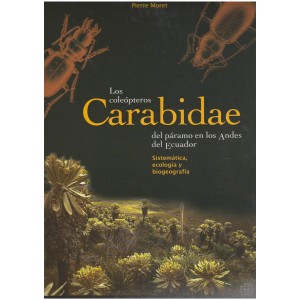Moret P., 2005: Los Coleopteros Carabidae del Paramo en los Andes del Ecuador: Sistemática, Ecología y Biogeografía
ISBN: 88-426966-4-1
306 pages, 180x240 mm, 10 color plates, 398 black&white figures (habitus, genitalia, maps), soft cover.
Text in Spanish with English abstract.













